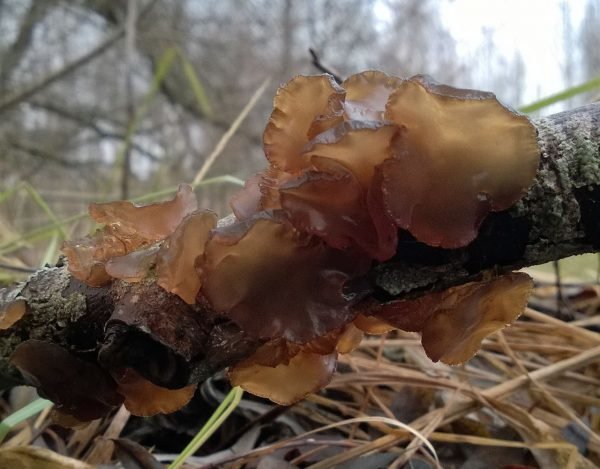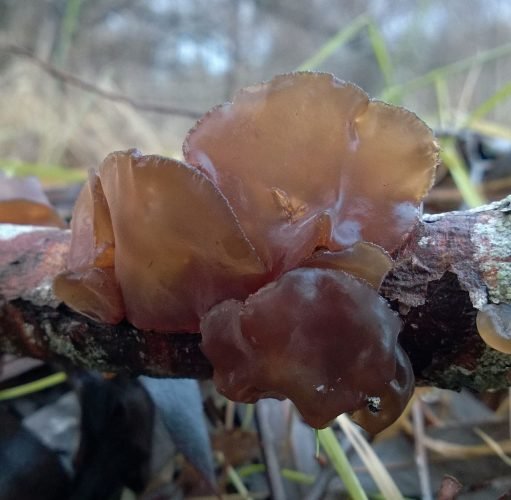Exidia compressed (Exidia recisa)
- Division: Basidiomycota (Basidiomycetes)
- Subdivision: Agaricomycotina (Agaricomycetes)
- Class: Agaricomycetes (Agaricomycetes)
- Subclass: Auriculariomycetidae
- Order: Auriculariales (Auriculariales)
- Family: Exidiaceae (Exidiaceae)
- Genus: Exidia (Exidia)
- Type: Exidia recisa (Exidia compressed)
- Tremella severed
- Tremella salicus

Description
Fruiting bodies up to 2.5 cm in diameter and 1-3 mm thick, yellow-brown or reddish-brown, transparent, similar in texture to soft jelly, initially truncated-conical or triangular in shape, later rather leaf-shaped, attached to the substrate at one point ( sometimes there is something like a short stem), often become drooping with age. They grow most often in groups, but individual specimens usually do not merge with each other. The upper surface is smooth, shiny, slightly wrinkled; the lower surface is smooth, matte; wavy edge. The taste and smell are inexpressive.
Ecology and distribution
Widespread species in the Northern Hemisphere. Usually it is a late-autumn mushroom, but in principle its season is extended from April to the end of December (depending on the mildness of the climate). In dry weather, the fungus dries up, but after rain or heavy morning dew comes to life and continues to spore.
Grows on dead branches of hardwoods, including deadwood, mainly on willow, but also recorded on poplar, alder and bird cherry (as well as other representatives of the genus Prunus).

Edibility
Mushroom inedible.
Similar species
The widespread glandular exsidia (Exidia glandulosa) has black-brown or black fruiting bodies of an irregular, often brain-shaped shape with small warts on the surface, growing together into dense shapeless groups.
Truncated exsidia (Exidia truncata) is very similar in color and quite similar in shape, but it, like glandular exsidia, has small warts on the surface. In addition, the lower surface is velvety.
Blooming Exidia repanda, similar in color, has round, flattened fruiting bodies that are never conical and hanging. In addition, it most often grows on birch and is never found on willow.
The brown leafy trembling (Tremella foliacea) has larger fruiting bodies in the form of curly lobes, blackening with age.
Exidia umbrinella is similar in shape and color of fruiting bodies, but this rather rare species grows only on conifers.
Tremella orange (Tremella mesenterica) is distinguished by its bright yellow or yellow-orange color and folded fruiting bodies.









